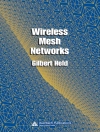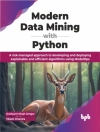Soft Computing admits approximate reasoning, imprecision, uncertainty and partial truth in order to mimic aspects of the remarkable human capability of making decisions in real-life and ambiguous environments. ‘Soft Computing in Industrial Applications’ contains a collection of papers that were presented at the 11th On-line World Conference on Soft Computing in Industrial Applications, held in September-October 2006. This carefully edited book provides a comprehensive overview of the recent advances in the industrial applications of soft computing and covers a wide range of application areas, including data analysis and data mining, computer graphics, intelligent control, systems, pattern recognition, classifiers, as well as modeling optimization. The book is aimed at researchers and practitioners who are engaged in developing and applying intelligent systems principles to solving real-world problems. It is also suitable as wider reading for science and engineering postgraduate students.
Содержание
Invited Keynote.- Hybrid Dynamic Systems in an Industry Design Application.- I: Soft Computing in Computer Graphics, Imaging and Vision.- Object Recognition Using Particle Swarm Optimization on Fourier Descriptors.- Gestix: A Doctor-Computer Sterile Gesture Interface for Dynamic Environments.- Differential Evolution for the Registration of Remotely Sensed Images.- Geodesic Distance Based Fuzzy Clustering.- II: Control Systems.- Stability Analysis of the Simplest Takagi-Sugeno Fuzzy Control System Using Popov Criterion.- Identification of an Experimental Process by B-Spline Neural Network Using Improved Differential Evolution Training.- Applying Particle Swarm Optimization to Adaptive Controller.- B-Spline Neural Network Using an Artificial Immune Network Applied to Identification of a Ball-and-Tube Prototype.- III: Pattern Recognition.- Pattern Recognition for Industrial Security Using the Fuzzy Sugeno Integral and Modular Neural Networks.- Application of a GA/Bayesian Filter-Wrapper Feature Selection Method to Classification of Clinical Depression from Speech Data.- Comparison of PSO-Based Optimized Feature Computation for Automated Configuration of Multi-sensor Systems.- Evaluation of Objective Features for Classification of Clinical Depression in Speech by Genetic Programming.- A Computationally Efficient SUPANOVA: Spline Kernel Based Machine Learning Tool.- IV: Classification.- Multiobjective Genetic Programming Feature Extraction with Optimized Dimensionality.- A Cooperative Learning Model for the Fuzzy ARTMAP-Dynamic Decay Adjustment Network with the Genetic Algorithm.- A Modified Fuzzy Min-Max Neural Network and Its Application to Fault Classification.- AFC-ECG: An Adaptive Fuzzy ECG Classifier.- A Self-organizing Fuzzy Neural Networks.- V: Soft Computing for Modeling, Optimization and Information Processing.- A Particle Swarm Approach to Quadratic Assignment Problems.- Population-Based Incremental Learning for Multiobjective Optimisation.- Combining of Differential Evolution and Implicit Filtering Algorithm Applied to Electromagnetic Design Optimization.- A Layered Matrix Cascade Genetic Algorithm and Particle Swarm Optimization Approach to Thermal Power Generation Scheduling.- Differential Evolution for Binary Encoding.- VI: Soft Computing in Civil Engineering and Other Applications.- Prioritization of Pavement Stretches Using Fuzzy MCDM Approach – A Case Study.- A Memetic Algorithm for Water Distribution Network Design.- Neural Network Models for Air Quality Prediction: A Comparative Study.- Recessive Trait Cross over Approach of GAs Population Inheritance for Evolutionary Optimization.- Automated Prediction of Solar Flares Using Neural Networks and Sunspots Associations.












